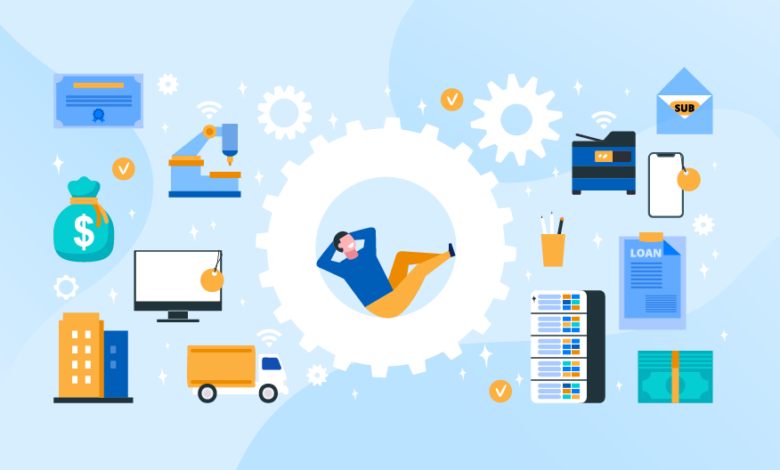Learn Efficiency and Creativity with Asset Management Software

In today’s hyper-connected digital landscape, businesses are faced with the challenge of managing an ever-growing volume of digital assets. From product images to marketing videos, the sheer diversity and quantity of content necessitate robust solutions for organization, accessibility, and collaboration. Enter asset management software – a game-changer in the realm of content management.
What is Asset Management Software?
Asset management software, also known as digital asset management (DAM) software, serves as a centralized hub for storing, organizing, and distributing digital assets. These assets encompass a broad spectrum, including images, videos, documents, audio files, and more. The key to its efficacy lies in its ability to facilitate systematic categorization, metadata tagging, and streamlined access to assets.
Benefits of Asset Management Software
-
- Enhanced Organization: Asset management software empowers users to organize digital assets systematically, ensuring easy retrieval and seamless navigation. Through customizable metadata fields and keyword tagging, users can categorize assets based on parameters such as type, date, usage rights, and more, facilitating efficient asset management.
- Improved Collaboration: Collaboration is simplified with asset management software, enabling teams to work on the same files simultaneously, regardless of geographical barriers. Version control features ensure that all stakeholders are aligned with the latest iterations of assets, fostering collaboration and reducing errors.
- Streamlined Workflows: By automating repetitive tasks such as file conversion, resizing, and distribution, asset management software streamlines workflows, saving time and resources. Integration with other software solutions, such as project management tools and content creation platforms, further enhances efficiency and productivity.
- Brand Consistency: Maintaining brand consistency is imperative for building brand identity and recognition. Asset management software serves as a repository for brand assets, including logos, fonts, and brand guidelines, ensuring that all marketing materials adhere to brand standards across channels and touchpoints.
- Security and Compliance: Protecting sensitive digital assets is paramount for businesses, particularly in industries with stringent compliance regulations. Asset management software offers robust security features, including access controls, encryption, and audit trails, safeguarding assets and ensuring compliance with data protection laws.
- Cost Savings: Investing in asset management software yields significant cost savings by reducing manual asset management efforts and minimizing the risk of asset loss or duplication. By maximizing the utilization of existing assets and optimizing workflows, businesses can enhance their return on investment and operational efficiency.
-
What is Digital Asset Management Software?
- Digital asset management (DAM) software is a specialized tool designed to help businesses and organizations store, organize, manage, and distribute digital assets effectively. These assets can include a wide range of media types such as images, videos, audio files, documents, presentations, and more.
- Digital asset management software provides a centralized repository where users can upload, categorize, tag, search for, and retrieve digital assets as needed. It typically offers features such as metadata management, version control, access control, workflow automation, and integration with other software tools and systems.
- The primary goal of digital asset management software is to streamline the process of managing digital assets throughout their lifecycle, from creation and storage to distribution and archiving. By providing a centralized and organized system for storing and accessing digital assets, DAM software helps improve collaboration among team members, ensures brand consistency across marketing materials, facilitates compliance with copyright and usage rights, and ultimately enhances productivity and efficiency within an organization.
- Overall, digital asset management software plays a critical role in enabling businesses to effectively leverage their digital assets to support marketing campaigns, sales efforts, internal communications, and other business initiatives.
- Analytics and Reporting: Digital asset management software often includes analytics and reporting capabilities that provide insights into asset usage, performance, and ROI. By tracking metrics such as downloads, views, and engagement, organizations can make data-driven decisions to optimize their content strategies and maximize the value of their digital assets.
- Scalability and Flexibility: DAM software is designed to scale with the growing needs of an organization, accommodating an increasing volume of digital assets and users. Additionally, many DAM solutions offer flexibility in terms of deployment options, allowing organizations to choose between on-premises, cloud-based, or hybrid solutions based on their specific requirements and preferences. This scalability and flexibility ensure that DAM software can adapt to the evolving needs and dynamics of businesses across different industries and sizes.
The Future of Content Management
As technology continues to evolve, the future of content management is poised for innovation and advancement. Artificial intelligence (AI) and machine learning (ML) are poised to revolutionize content management by automating tasks such as content tagging, metadata generation, and predictive analytics. Additionally, asset management software will play a pivotal role in enabling personalized content experiences across omnichannel marketing initiatives, driving engagement and conversion rates.
Conclusion
In an era defined by digital proliferation and content abundance, efficient management of digital assets is indispensable for businesses seeking to thrive in competitive markets. Asset management software offers a holistic solution to the challenges of content organization, collaboration, and distribution, empowering businesses to unlock new opportunities for innovation and creativity.
Investing in asset management software isn’t just about managing files; it’s about transforming the way businesses organize, collaborate, and deliver content in today’s dynamic digital landscape. By embracing the capabilities of asset management software, organizations can streamline workflows, enhance collaboration, and ensure brand consistency, thereby driving success and growth in the digital age.



